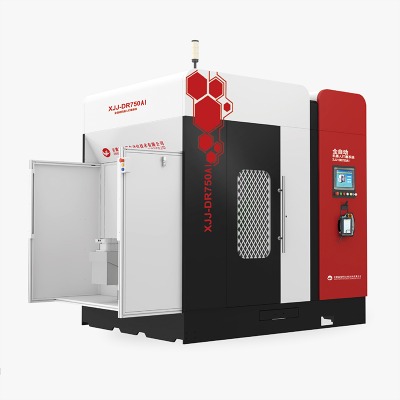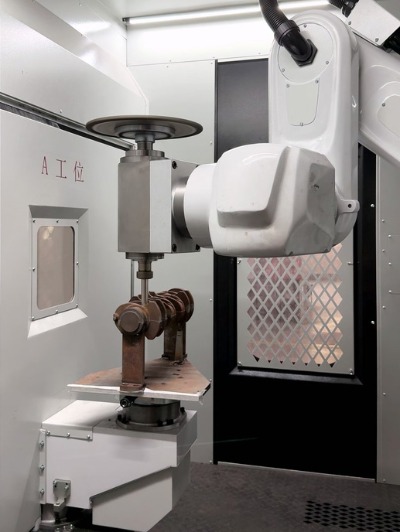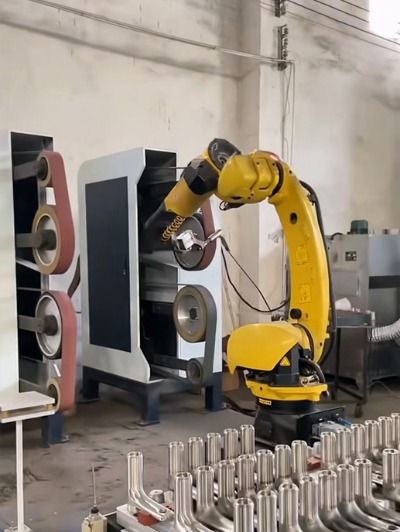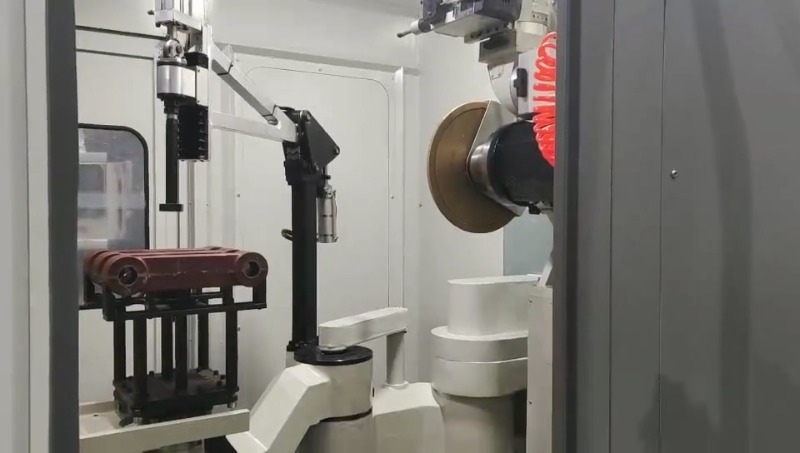عندما تحتاج الورشة إلى تغيير طرازات المنتجات، هل تستطيع معدات الطحن الاستجابة بسرعة؟ يكمن السبب وراء ذلك في التنافس بين "توافق المنتج" و"تكلفة التغيير".

بناءً على البيانات، تُعدّ ميزة "المرونة" التي يتمتع بها روبوت الطحن "نيفيو" ملحوظة: فهو يعتمد وضع "وضع قطعة العمل + طحن الذراع"، ويمكنه التكيف مع معالجة الأجزاء المعقدة وأنواع متعددة من قطع العمل عن طريق استبدال التركيبات، مع معدل إنجاز طحن عالٍ. بالنسبة للشركات التي تحتاج إلى تغيير النماذج بشكل متكرر، فإن وضع "استبدال التركيبات يعني تغيير النموذج" يعني وقت توقف قصيرًا وتكاليف عمالة منخفضة.

تواجه معدات الطحن الروبوتية معضلةً: فهي تستخدم طريقة "قبضة الروبوت على قطعة العمل"، ما يؤدي إلى عدم مسك الأجزاء المعقدة أو تداخل موضع القبضة مع نتوءات الطحن، مما يؤدي إلى انخفاض معدل إتمام الطحن بأكثر من 30% مقارنةً بالنظام الآلي بالكامل. والأمر الأكثر إزعاجًا هو أنه عند تغيير الطرازات، يلزم استبدال الماسك وإعادة تصحيح أخطاء الروبوت، مما يتطلب تكاليف عمالة عالية ووقت توقف طويل، وقد يتطلب أيضًا إعادة تشغيله لعدم توافق الماسك مع المنتج الجديد.

مع أن الآلة الخاصة ذات الخمسة محاور والأربع وصلات لا تحتاج سوى لاستبدال التركيبات لتغيير الطراز، إلا أنها محدودة بهيكلها ذي الخمسة محاور والأربع وصلات، ومرونتها ضعيفة للغاية. فهي ببساطة غير قادرة على معالجة الأجزاء المعقدة - وهذا عيبٌ فادحٌ في الصناعات ذات التكرارات السريعة للمنتجات والأشكال المعقدة (مثل مصبوبات السيارات والآلات الدقيقة).

الخلاصة: جوهر إنتاج الأصناف المتعددة هو "التكلفة المنخفضة والتغيير السريع". إن مزايا روبوت الطحن الجديد المتطور ذي الثمانية محاور والسبعة روابط، من حيث التوافق وكفاءة التغيير، تُسهم بشكل مباشر في خفض تكاليف الإنتاج وتحسين سرعة الاستجابة.